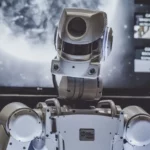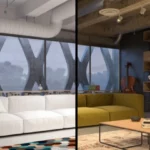Lexica art is a captivating and innovative expression that combines the written word with visual elements to create stunning and thought-provoking artworks.
It involves using letters, words, and language as the primary medium to convey artistic concepts, ideas, and emotions. By merging typography, composition, and visual design, lexica art transforms words into visually striking pieces that captivate and engage viewers.
History of Lexica Art
Origins of Lexica Art
The origins of lexica art can be traced back to ancient civilizations, where the written word held significant cultural and religious importance. Old scripts and calligraphy served as the precursors to this unique art form, laying the foundation for manipulating and exploring text as a visual element.
Evolution of Lexica Art
Over time, lexica art evolved alongside advancements in printing techniques, typography, and graphic design, gaining recognition as a distinct artistic practice.
Characteristics of Lexica Art
Use of Text and Language
Lexica art showcases a harmonious blend of textual and visual elements. Artists carefully select and arrange words, phrases, or entire texts to create visually appealing compositions.
Visual Elements in Lexica Art
The choice of typography, font styles, and sizes plays a crucial role in conveying meaning and evoking specific emotions. Furthermore, visual elements such as colors, shapes, and images are often integrated to enhance the overall impact and aesthetics of the artwork.
Importance and Impact of Lexica Art
- Expression of Ideas and Emotions
- Social and Cultural Relevance
Lexica art holds immense importance as a means of expressing ideas and emotions. Artists utilize text to communicate narratives, personal experiences, social commentary, or philosophical concepts.
The fusion of language and visual art allows for nuanced and multi-layered interpretations, inviting viewers to explore and contemplate the messages embedded within the artwork. Lexica art also holds cultural and social relevance, reflecting a particular time and place’s values, traditions, and issues.
Techniques and Styles in Lexica Art
- Typography and Font Choices
- Composition and Layout
Artists employ various techniques and styles to create captivating lexica artworks. Typography plays a vital role, with artists carefully selecting fonts, experimenting with letterforms, and exploring different sizes and arrangements.
The composition and layout of the artwork determine the visual flow and balance, guiding the viewer’s attention and reinforcing the intended meaning. Through these techniques, lexica artists craft unique visual experiences that engage and challenge the viewer’s perception of the text.
Famous Lexica Artworks
- Notable Artists in Lexica Art
- Iconic Lexica Art Pieces
Throughout history, numerous artists have made significant contributions to lexica art. Renowned figures such as Jenny Holzer, Barbara Kruger, and Robert Indiana have produced iconic Lexica artworks that have garnered international acclaim.
Their innovative use of text and visual design has inspired generations of artists and expanded the possibilities of lexica art as a medium for social and political commentary.
Lexica Art in the Digital Age
- Digitization and Online Platforms
- Interactive and Multimedia Lexica Art
The digital age has brought new opportunities and challenges for Lexica art. Digitization has made creating, sharing, and reproducing lexica artworks easier, leading to a broader audience and increased accessibility.
Online platforms and social media have become virtual galleries, enabling artists to showcase their work to a global audience. Additionally, integrating interactive and multimedia elements has opened up exciting possibilities for immersive and engaging lexica art experiences.
Challenges and Criticisms of Lexica Art
- Legibility and Accessibility
- Commercialization and Appropriation
During lexica art offers unique artistic possibilities, it faces challenges and criticisms. The legibility and accessibility of text-based artworks can sometimes be compromised, mainly when complex typography or unconventional arrangements are employed.
Additionally, there are concerns about the commercialization and appropriation of lexica art, with the potential for diluting artistic intent or exploiting cultural and linguistic heritage.
Future of Lexica Art
- Innovations and Experimentation
- Integration with Technology
The future of lexica art holds exciting prospects as artists continue to push boundaries, innovate, and experiment. Advancements in technology offer new avenues for exploration, with artists incorporating digital tools, augmented reality, and interactive installations into their lexica artworks.
Integrating technology can enhance the immersive experience and expand the possibilities for creating dynamic and engaging text-based art.
Lexica Art Alternatives
For those seeking alternatives to lexica art, various other forms of text-based art exist to explore. Concrete poetry, for example, emphasizes the visual arrangement of text on the page to create poetic compositions.
Calligraphy, focusing on skilled handwriting and lettering, offers a traditional and elegant approach to text-based art. Each alternative form brings unique qualities and artistic possibilities, providing individuals with various creative avenues to explore.
How to Use Lexica Art
Lexica art can be utilized in various design projects to enhance the visual impact and convey specific messages. Graphic design can create attention-grabbing posters, book covers, or advertisements.
Web designers can incorporate lexica art elements to add visual interest and communicate information effectively. By carefully selecting fonts, arranging text, and integrating visual elements, designers can harness the power of lexica art to create visually compelling and engaging designs.
Is Lexica Art Free Or Paid?
Lexica art can be both accessible and commercially available. Many artists create and share their lexica artworks freely, allowing others to enjoy and appreciate their creativity without any cost.
However, specific Lexica artworks may also be purchased as limited editions or prints, especially when created by well-known artists.
The availability and pricing of Lexica art can vary depending on the artist, platform, and the specific artwork in question.
✅✅ WHAT IS MIDJOURNEY AI? ✅✅
Is Lexica Art Safe?
Like any other art form, Lexica art is generally safe for viewers. It does not pose any physical risks or dangers. However, the content and messages conveyed through lexica art can sometimes be provocative, challenging, or controversial.
Viewers must approach the artwork with an open mind and be prepared to engage with potentially challenging or thought-provoking ideas.
As with any form of art, individual interpretations and reactions may vary.
Conclusion
Lexica art represents a fascinating fusion of language, visual design, and artistic expression. Through the clever arrangement of words, typography, and graphic elements, artists create captivating artworks that challenge conventional notions of art and engage viewers on intellectual, emotional, and aesthetic levels. With its rich history, evolving techniques, and growing digital presence, lexica art continues to captivate audiences and shape the future of artistic expression.
FAQs
What materials are commonly used in Lexica Art?
Artists in lexica art often use various materials, including paper, canvas, wood, metal, and digital mediums. The choice of materials depends on the artist’s preferences and the desired aesthetic outcome.
Can anyone create Lexica Art?
Anyone with a creative mindset and a passion for language and art can explore lexica art. It is a versatile form of artistic expression that allows individuals to experiment with text, typography, and visual design.
Is Lexica Art considered a form of literature?
While lexica art utilizes language and textual elements, it is primarily considered an art form rather than literature. Lexica art focuses on the text’s visual and aesthetic qualities, using it as a medium for artistic expression rather than narrative or literary purposes.
How does Lexica Art relate to calligraphy?
Lexica art is rooted in calligraphy, the art of beautiful writing. Both art forms involve the manipulation and arrangement of text. Still, lexica art expands upon calligraphy by incorporating visual design principles, experimenting with typography, and integrating additional visual elements.
Where can I find Lexica Art exhibitions?
Lexica Art exhibitions are in various art galleries, museums, and cultural centers worldwide. Additionally, many artists showcase their work online through their websites, social media platforms, and virtual galleries.






